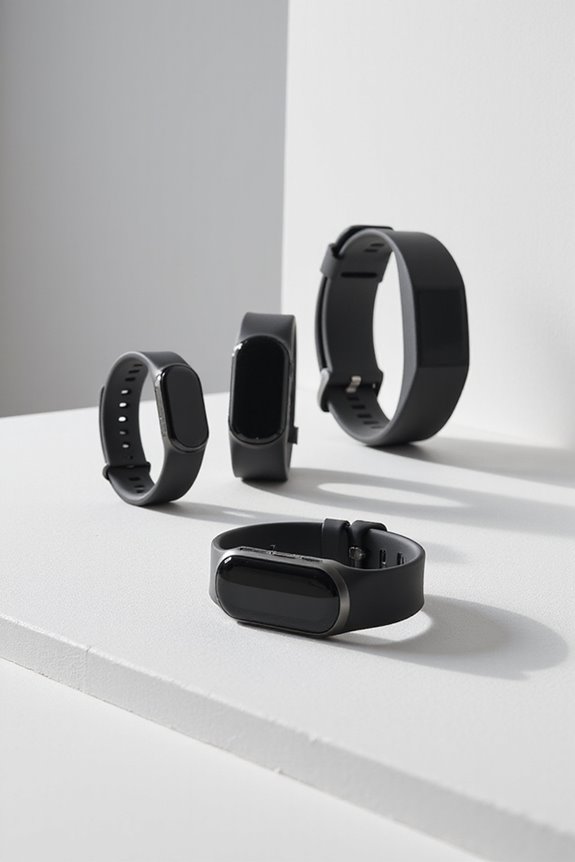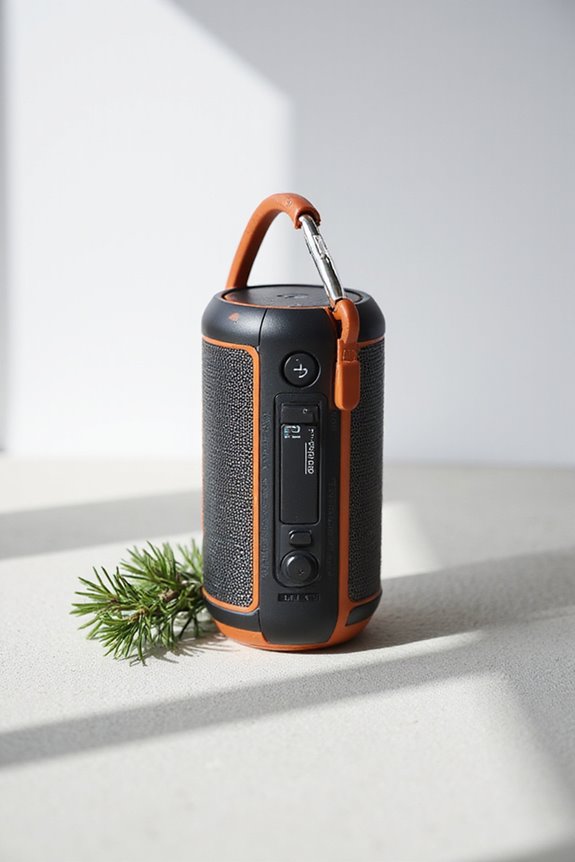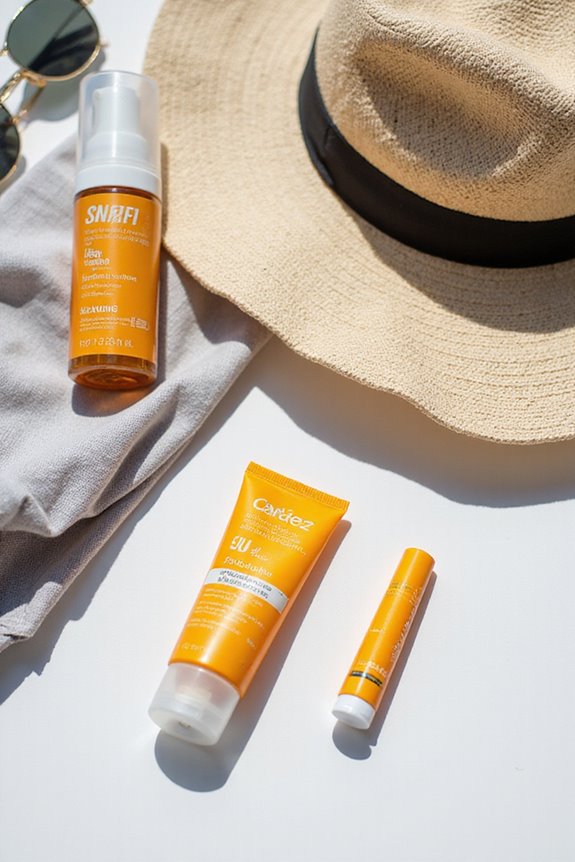Choosing a fitness tracker for running can feel like picking a favorite candy—lots of options and everyone has a preference! First, look for GPS accuracy; you don’t want to get lost on your route. Heart rate monitoring is key for knowing when to push yourself or chill out. Battery life matters too, especially for long runs. Finally, pick a durable and water-resistant design so it withstands your adventures. Stick around to discover more features that could make your runs even better!
Key Takeaways
- Ensure the fitness tracker has reliable GPS accuracy for precise distance tracking and route planning during runs.
- Look for heart rate monitoring features to optimize training intensity and understand cardiovascular fitness effectively.
- Check battery life to ensure it supports your running duration, especially for long-distance activities.
- Choose a display with high quality and brightness for visibility in sunlight, along with a user-friendly interface.
- Consider durability, water resistance, and safety features, such as emergency alerts, for peace of mind during solo runs.
Understanding GPS Accuracy and Its Importance
When it comes to choosing a fitness tracker for running, GPS accuracy is absolutely essential—think of it as the lifeline for every serious runner. GPS reliability plays a significant role in distance tracking, allowing runners to analyze their performance effectively. However, urban challenges, like tall buildings causing signal interference, can create accuracy variations that lead to frustratingly inaccurate results. Imagine logging a 10K but only clocking 9.5K because of those pesky multipath effects! Runners need to be aware that dense foliage can also weaken signals, especially for those venturing off-road. With accurate GPS data, they can truly understand their performance, adjust their training, and set realistic goals. In the end, choosing a tracker with reliable GPS is key to revealing running potential.
Evaluating Battery Life for Long Runs
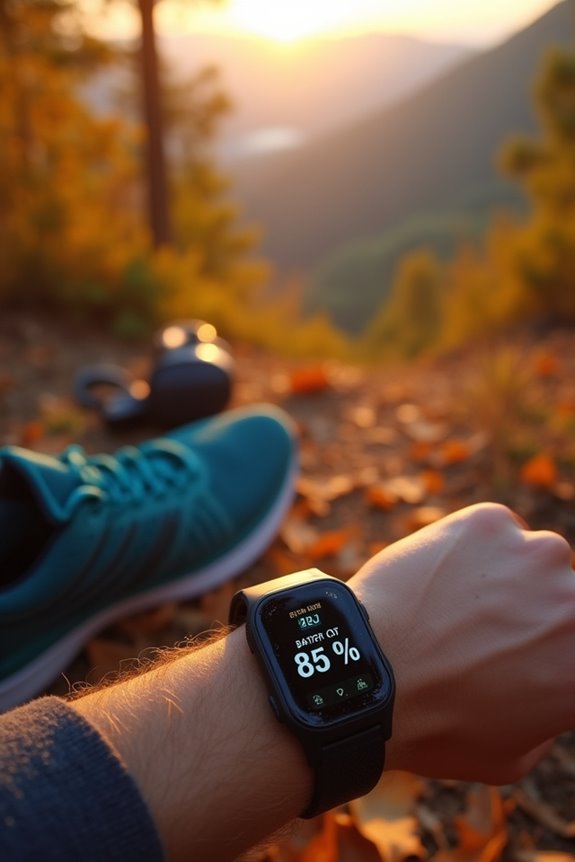
Choosing a fitness tracker for long runs can feel a bit like picking the right pair of shoes—after all, a great run relies on the right gear. Battery life is vital; for instance, the Garmin Instinct 2X Solar boasts an impressive 40 days, or unlimited with sunlight. The Apple Watch Series 10 is solid too, lasting up to 36 hours—just enough for most long runs. When considering power-saving features, Garmin’s Fenix series offers custom modes, extending battery life when it matters most. However, some trackers, like the Polar Pacer Pro, only last about a week, which might not cut it for dedicated runners. So, weigh your options carefully, and confirm that your tracker can keep up with your passion for the miles ahead!
Display Quality and User Interface Considerations
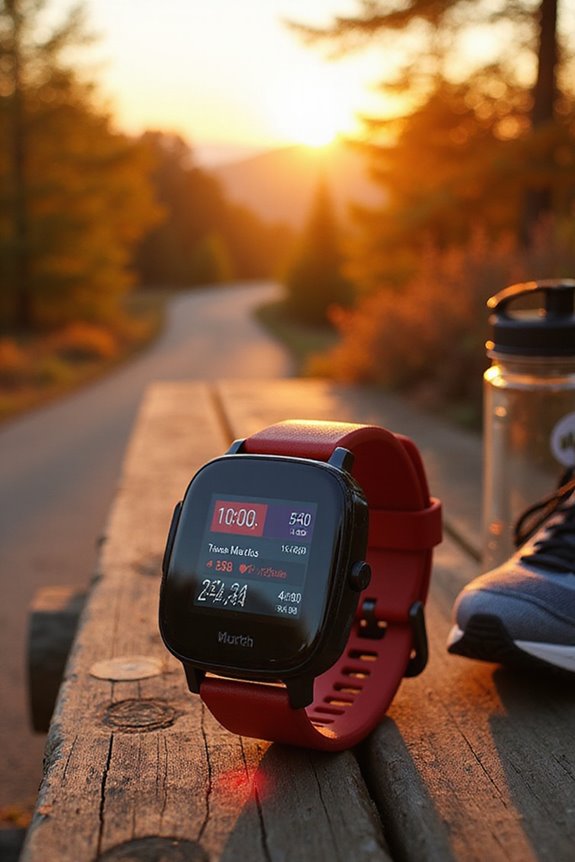
Steering through the world of fitness trackers can be a bit like wandering through a maze, especially when it comes to display quality and user interface. Runners need screens that boast high display brightness, allowing for clear visibility even under the sun’s glare. AMOLED and OLED displays shine with vibrant colors, while transflective LCDs reflect ambient light perfectly outdoors. A larger screen, around 1.2″ to 1.4″, helps display multiple metrics without the need to scroll mid-run, enhancing usability. The user interface plays a pivotal role, with touchscreen options offering sleek navigation, though physical buttons can be a lifesaver when hands are sweaty. Customizable watch faces and data fields guarantee runners can keep their eyes on what matters most, making each run a little easier.
The Role of Heart Rate Monitoring in Performance
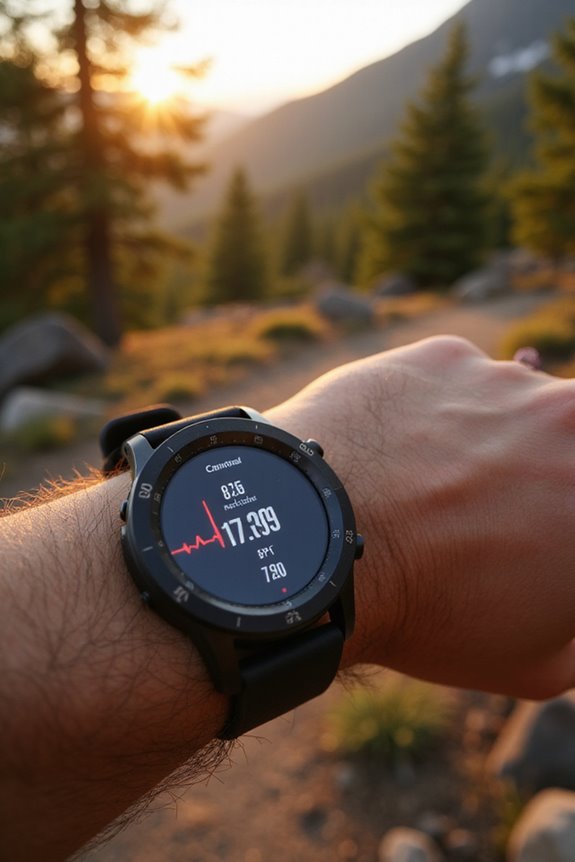
Heart rate monitoring plays an essential role in enhancing running performance, and understanding its dynamics can feel like uncovering a hidden treasure map. By tracking heart rate zones, runners can identify their training intensity and adjust their efforts accordingly. Imagine running and knowing exactly when to push harder or ease off—it’s like having a personal coach on your wrist! With devices displaying real-time BPM data, runners can optimize their training effectiveness, ensuring they spend time in each zone, from fat-burning to maximum intensity. Plus, post-workout analysis reveals insights that help refine future workouts. So, whether using a chest strap or a wrist monitor, harnessing heart rate data transforms running into a more strategic, rewarding experience, leading to improved performance and personal bests.
Assessing Durability and Water Resistance
When it comes to fitness trackers, durability and water resistance are two key factors that can make or break the running experience. A solid durability assessment involves examining materials like stainless steel or high-quality plastics, which guarantee the tracker can handle the daily grind. Look for robust designs with scratch-resistant screens, like Gorilla Glass, to protect against those inevitable bumps. Water resistance is equally important; aim for a tracker with a high waterproof rating, such as IP68, to survive splashes or rainy runs. If you’re a swim enthusiast, consider trackers designed specifically for that purpose. Ultimately, your choice should reflect your lifestyle, confirming your tracker is as tough and reliable as you are on the road.
Budgeting for Your Fitness Tracker
Finding the right fitness tracker isn’t just about durability and water resistance; budgeting plays a huge role too. When diving into the world of budget fitness, shoppers can discover a treasure trove of options, often under $50. Take the Amazfit Band 7, for example, priced around $39, boasting an AMOLED display and impressive battery life. Or consider the Xiaomi Mi Smart Band 7, which offers over 110 workout modes at a steal. While tracker brands like Fitbit and Garmin have pricier models, they do provide reliable choices like the Inspire 3 and Vivosmart 5. Ultimately, it’s about balancing features with your wallet, ensuring you don’t break the bank while keeping fit. Happy hunting for that perfect tracker!
Exploring Health and Recovery Tracking Features
How does one truly gauge their health and recovery while pursuing a running routine? Fitness trackers have become indispensable companions, offering a treasure trove of health insights. Devices like the Apple Watch Ultra 2 and Garmin models provide continuous heart rate monitoring, sleep tracking, and even VO2 Max readings, helping runners understand their physical state. Recovery metrics are equally significant; they estimate recovery times and track heart rate variability (HRV), giving insights into how well the body is recuperating. By analyzing sleep quality and energy levels through features like Garmin’s “Body Battery,” runners can fine-tune their training. These features not only enhance performance but also guarantee that runners stay healthy and prevent burnout, making every run feel just a bit more rewarding.
Smart Features and Connectivity Options
Among the myriad options available, fitness trackers have evolved into sophisticated devices packed with smart features and connectivity options that elevate the running experience. These gadgets often boast built-in GPS for accurate tracking—think Garmin or Fitbit—making certain you never lose your way. With customizable workouts and real-time guidance, they tailor each run to your goals. Smart integrations with apps like Google Maps and music services keep you entertained and informed. Plus, many offer voice assistance, allowing hands-free control—perfect for those moments when your hands are busy holding onto your water bottle. Connectivity options like Bluetooth and Wi-Fi, along with 4G LTE support, make sure you stay connected, making your runs not just about distance, but about smart living.
Prioritizing Design and Comfort in Wearables
What makes a fitness tracker truly comfortable and stylish? It’s all about that perfect blend of design aesthetics and strap comfort. Imagine slipping on a sleek, lightweight tracker like the Amazfit Active, with its thin metal case that feels barely there during a long run. Adjustable silicone straps, often preferred for their sweat resistance, provide a snug fit without pinching or sliding. Plus, the variety of colors and interchangeable bands lets users express their unique style. High-resolution screens make it easy to check stats in bright sunlight, while breathable materials prevent sweaty wrists. Ultimately, a fitness tracker should feel good on the wrist and look great, making it a companion you’ll want to wear every day.
Additional Features to Enhance Your Running Experience
When it comes to enhancing the running experience, fitness trackers have truly stepped up their game. These devices offer a wealth of features that can transform a mundane jog into an exciting adventure. Imagine having custom workouts tailored just for you, guiding your every step. With voice cues providing timely reminders during interval changes, runners can focus on their rhythm rather than glancing at their screens. GPS accuracy guarantees you’re not just running in circles, while heart rate monitoring keeps your training on point. Plus, post-workout insights give you a deeper understanding of your performance. Safety features, like emergency alerts, mean you can run confidently. With these advancements, every run becomes a more engaging and informed journey!
Frequently Asked Questions
What Brands Are Most Reliable for Fitness Trackers?
When evaluating brands for fitness trackers, Garmin reliability stands out for thorough metrics and durability, while Fitbit accuracy is notable for its user-friendly design and precise tracking. Both brands cater to diverse fitness needs effectively.
Can I Use a Fitness Tracker Without a Smartphone?
Many fitness trackers offer essential features like heart rate monitoring independently of smartphones. However, advanced metrics and device compatibility are often limited without a phone, affecting data access and syncing capabilities for extensive analysis.
How Do I Sync My Tracker With Fitness Apps?
Syncing methods for fitness trackers resemble weaving threads into a fabric of data. App compatibility plays an essential role, ensuring seamless integration across platforms, allowing users to monitor metrics effectively and maintain consistent activity records.
What Is the Warranty Policy for Fitness Trackers?
The warranty policy for fitness trackers typically includes a one-year warranty duration, covering defects in materials and workmanship. Warranty coverage excludes accidental damage and requires proof of purchase for valid claims through authorized service channels.
Are There Fitness Trackers Specifically Designed for Women?
Are fitness trackers tailored for women? Indeed, many models cater to style preferences and feature requirements, offering health insights like menstrual tracking and ergonomic designs, emphasizing both functionality and aesthetics for the modern female athlete.

